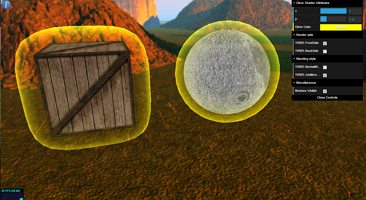The edges ... need to be softened somehow, and that's where the vertex normals come in. We can use the dot product of the view space normal ... with the view vector ... as a metric describing how how near to the edge ... the current fragment is.Linear algebra is amazingly useful. Typically, for those faces that appear (with respect to the viewer) to be near the center of the mesh, the normal of the face will point in nearly the same direction as the "view vector" -- the vector from the camera to the face -- and then the dot product of the normalized vectors will be approximately equal to 1. For those faces that appear to be on the edge as viewed from the camera, their normal vectors will be perpendicular to the view vector, resulting in a dot product approximately equal to 0. Then we just need to adjust the intensity/color/opacity of the material based on the value of this dot product, and voila! we have a material whose appearance looks the same (from the point of view of the camera) no matter where the object or camera is, which is the basis of the glow effect. (The glow shouldn't look different as we rotate or pan around the object.) By adjusting some parameters, we can produce an "inner glow" effect, a "halo" or "atmospheric" effect, or a "shell" or "surrounding force field" effect. To see the demo in action, check out http://stemkoski.github.io/Three.js/Shader-Glow.html.
In particular, click on the information button in the top left and adjust the values as recommended (or however you like) to see some of the possible effects.
Happy coding!
